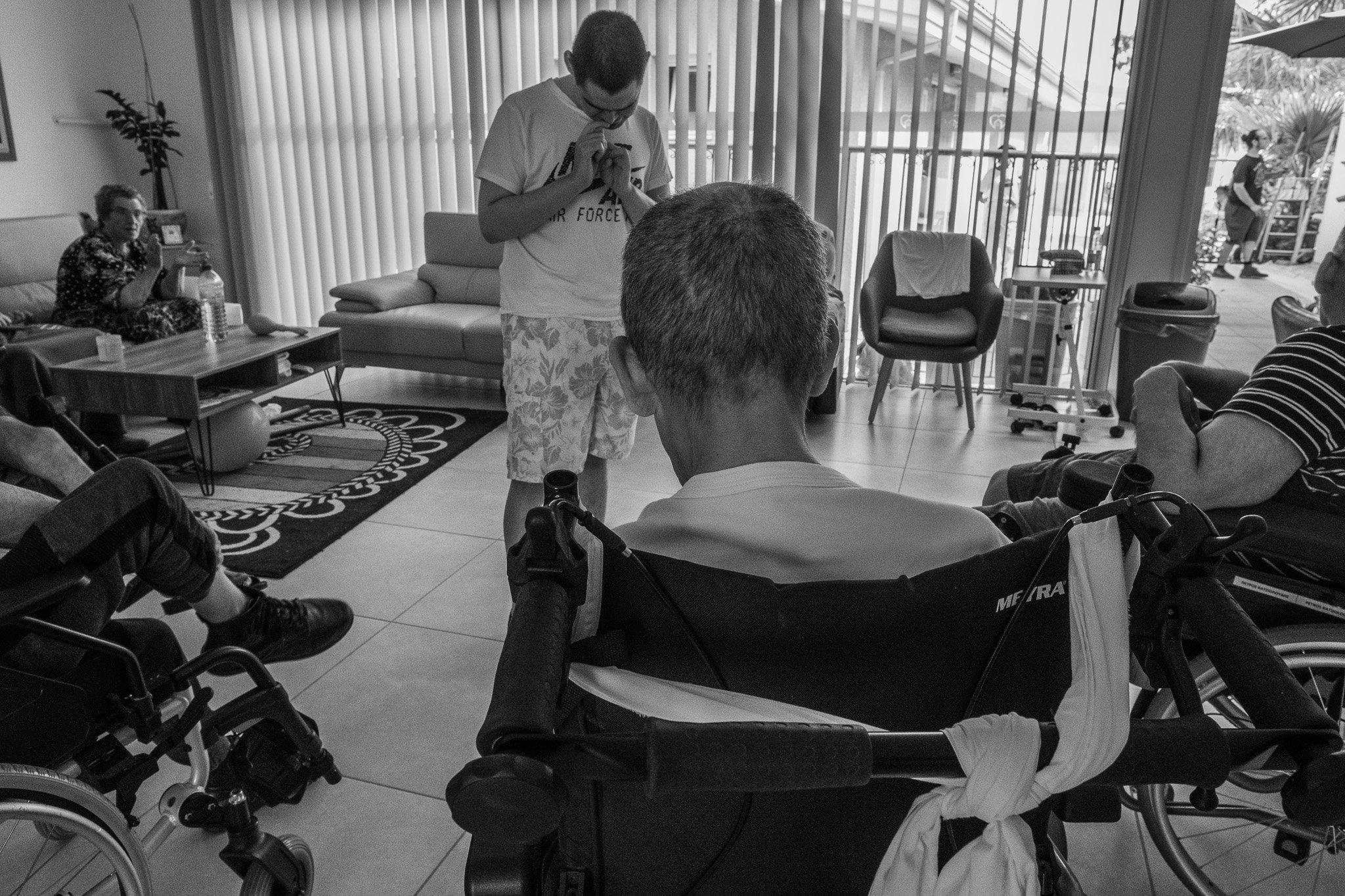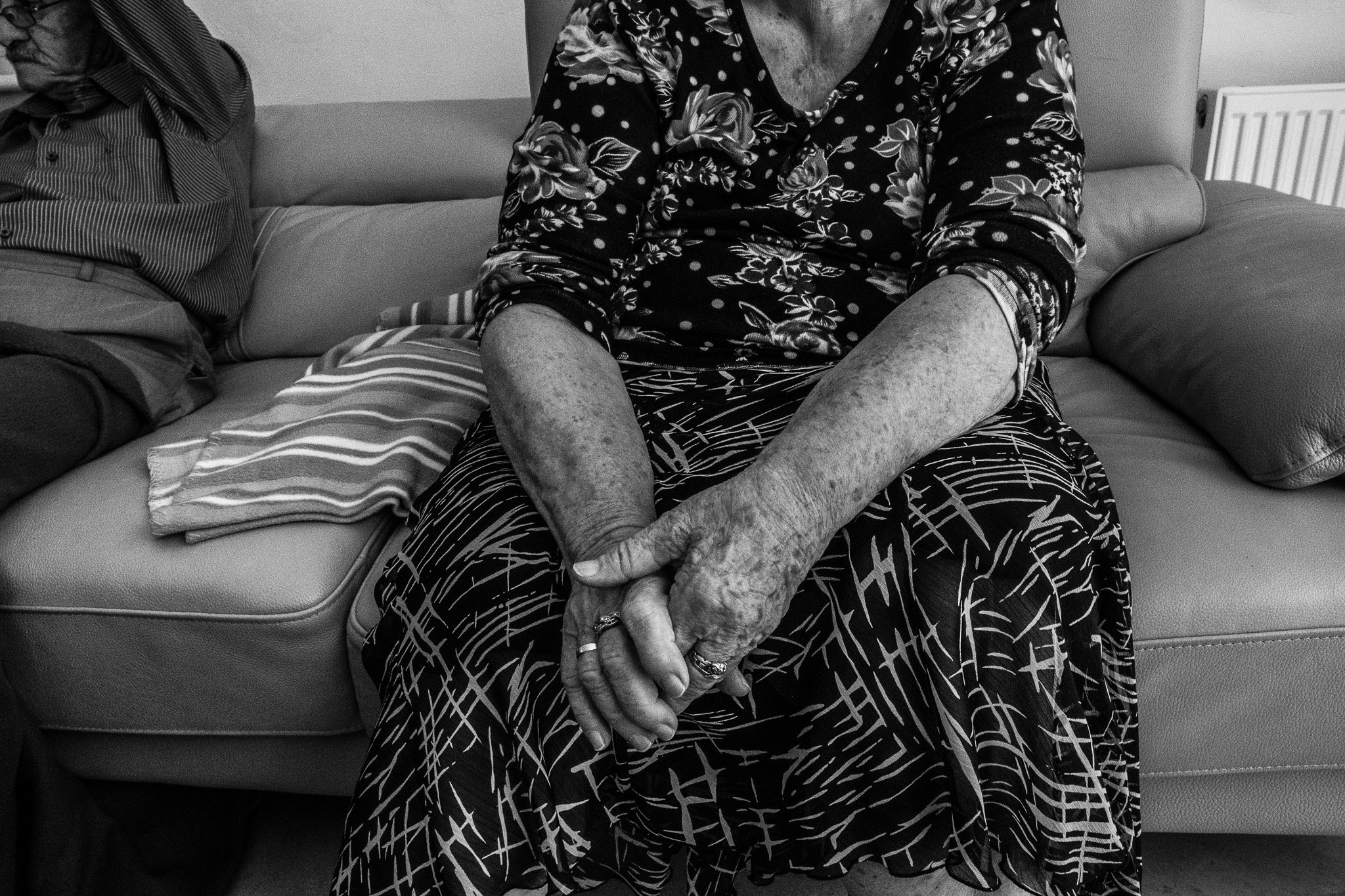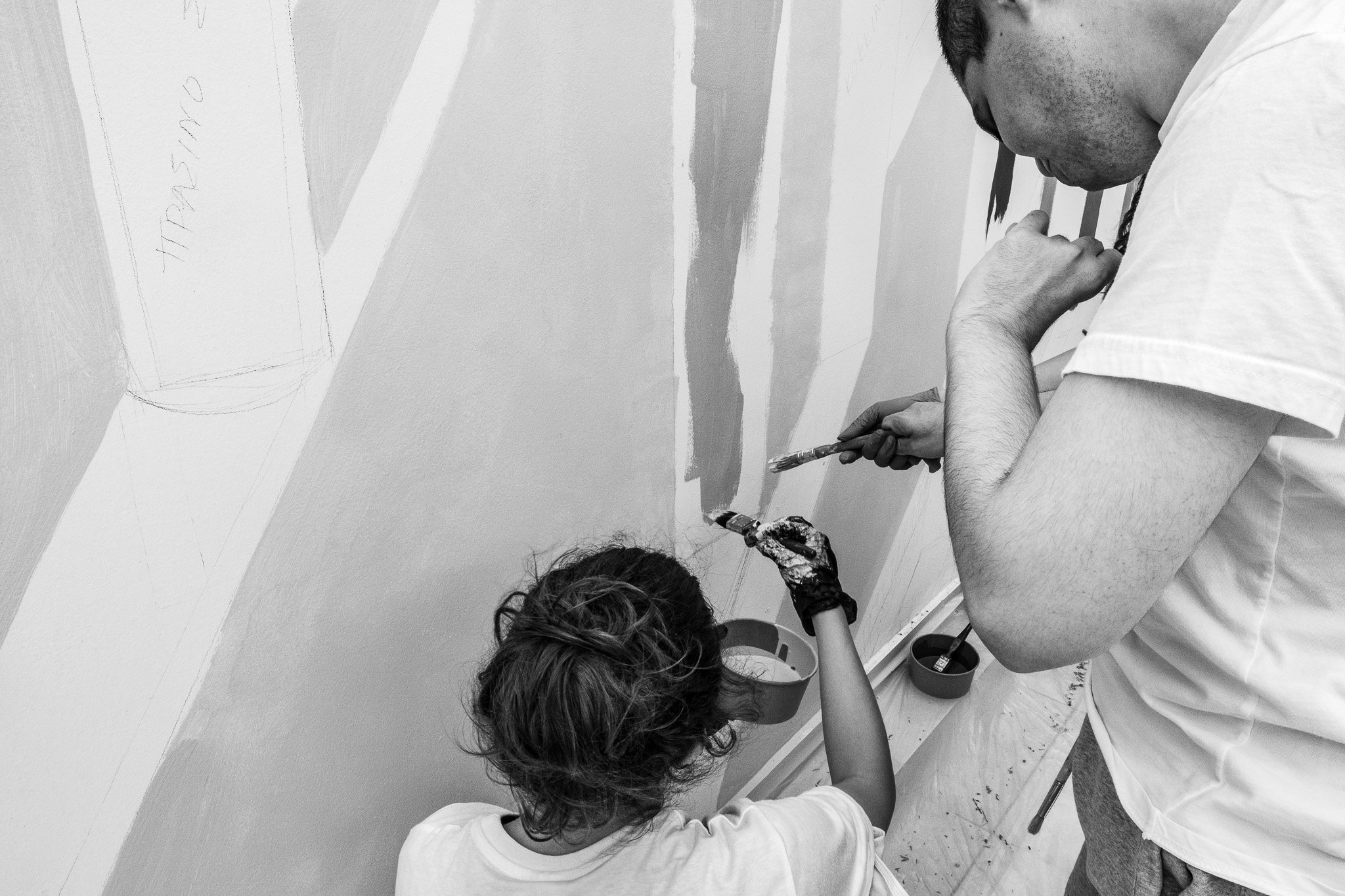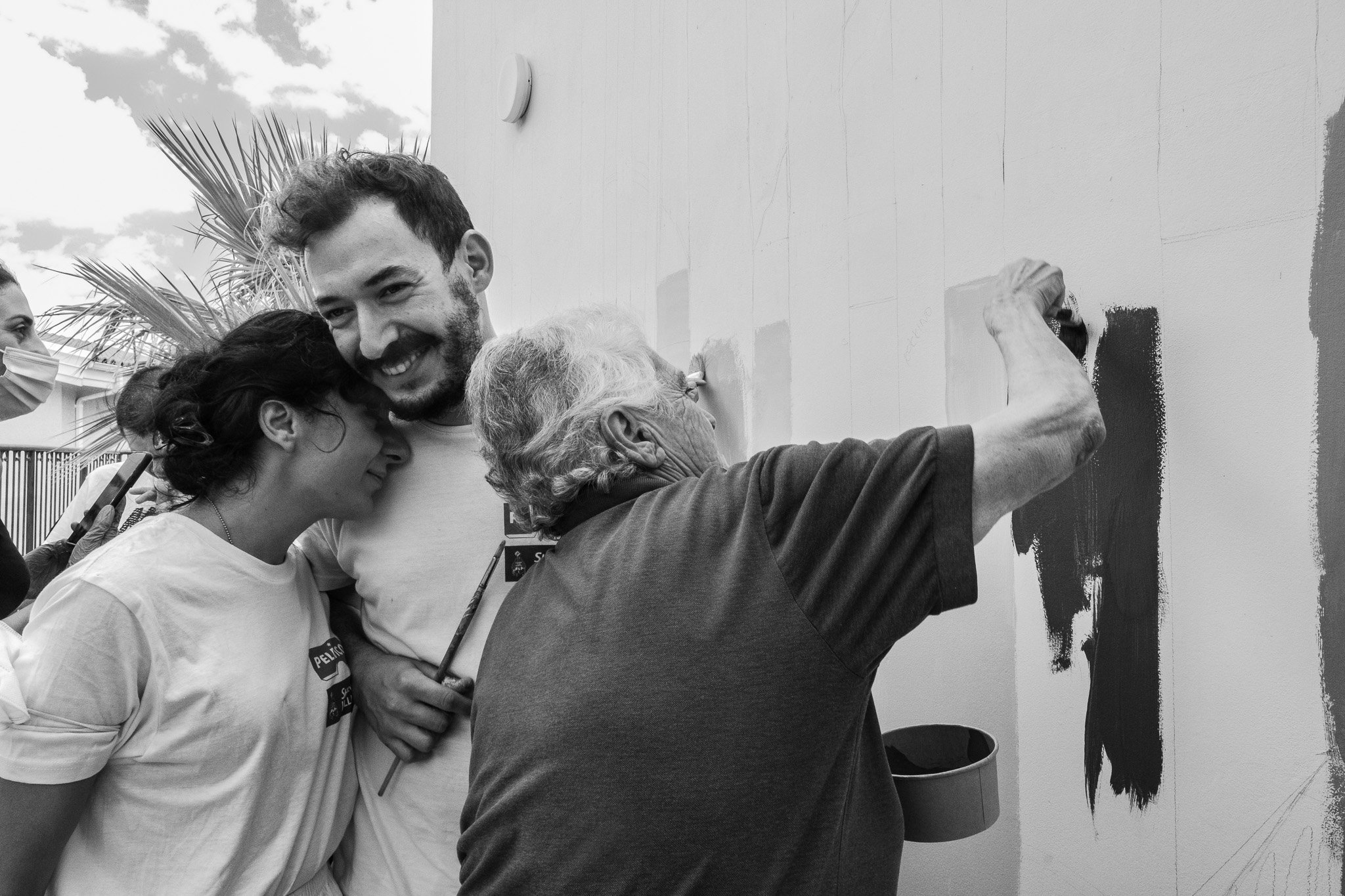The art of smiles in the island divided in two
The project of a collective of Cypriot and Armenian artists brings art to nursing homes and to temporary detention centers for migrants in Cyprus, the island divided by Europe's last wall.
"Kamil comes from across the sea, he is from Somalia and there he would return the day after his experience with us. He had actually accepted the repatriation; by now he only wished to return home, perhaps his attempts to change his life here in Cyprus had not gone as he had imagined. Only when he took the brush in his hand and began to paint did I see a smile on his face."
Pantelis Nicolaou, a Cypriot artist, sits before me after a day spent inside the Immigration Detention Centre in Menoyia, Larnaca district. Formerly known as Cizio or Kition Larnaca, positioned on the southeastern coast of the island is the third largest city in Cyprus by population after Nicosia and Limassol. Pantelis He is still wearing his paint-stained white T-shirt and as he speaks he keeps his eyes downcast and stares at any point on a map of Nicosia, the capital, lying on the table around which we are sitting. The Immigration Detention Centre in Menoyia is a nonplace. A place of detention and passage. In Cyprus every year, hundreds of irregular migrants are detained in conditions comparable to prison, even for long periods of time, awaiting deportation. Kamil is one of these migrants.
“Here, to bring back a smile to even one of these kids, I'm not saying my mission is done,” Pantelis continues, "but what I set out to do six months ago when we started thinking about the PEL project has reached another heart. And for me that is the most important thing."
Pantelis, a graduate of the Brera Academy in Milan, teaches art in Nicosia, and together with Elena Adamou, also an artist from Nicosia, and Liana Ghuk Asyan, an Armenian artist, is part of the PEL Art Project group (PEL stands for the three artists), a collective that works in particular social contexts such as nursing homes or detention facilities by organizing short painting workshops whose main purpose is to involve the guests of the facilities in the creation of artistic works, as in the case of the migrants detained in the Menoyia center until they are deported, who were called to intervene together with the artists on a large mural to be painted inside the prison canteen.
The goal of PEL Art Project is to offer a new experience, to leave a nice memory, a smile, and a bit of well-being to those who are living in a painful, stressful, or particularly delicate and fragile context, such as that of a prison precisely, or a nursing home. The island of Cyprus, as Stefania Mascetti reports in an article in Internazionale, is "currently the European Union country with the highest percentage of asylum seekers in relation to its population: about 5 percent (in Italy in 2020 the percentage was about 0.13 percent). And the numbers are increasing: according to UN data, there were 2,560 applications in 2022 (May figures)." By now there are 30,000 of them in the island's reception camps: Somalis, Afghans, Syrians, Pakistanis, Nigerians. A stream of desperate people who remain entangled in waiting for the verdict of an asylum claim that no one knows how it will turn out. If, as happened to Kamil, the request is not granted their fate is repatriation. In 2022 there were 3,200 unsuccessful asylum applications.
Here, where in the capital, Nicosia, the last wall of Europe, the buffer zone between the part of the city that is part of the Republic of Cyprus and the Turkish-occupied part of the city-the Turkish Republic of Northern Cyprus, recognized only by Ankara-resists, we come up against another wall, not physical but legislative. The island of Aphrodite, the goddess of beauty and love, becomes a black cliff of a desperate and temporary landing.
Eleni asks me what this experience in the guise of observer and photographer has left me, Anna, instead. I immediately think of the smile of Aphrodite, a resident of the Agios Antonios nursing home that takes in the elderly and disabled. She was the first to pick up the paintbrush. Her gesture was tentative at first, not quite sure what to do and what color to choose from the many jars arranged along the edge of the wall. Pantelis gently guided her near the blue color, she dipped the brush, slowly, and began to paint following the dotted lines on the wall.
The mural design depicted a forest. Leafy trees with colorful trunks towered in a blue sky. Then they were joined by Constantine, a disabled boy, and Monike, dressed in black with small, vivid eyes, her hands intertwined with those of her daughter who had come to visit.
"My most beautiful memory? “, Elena concludes, ”a lady from the senior center in Agios Antonios who after dipping her hands in the color laughing started, overjoyed, to paint directly on the wall. She looked like a child again."











